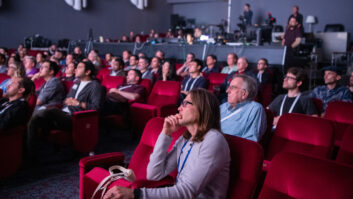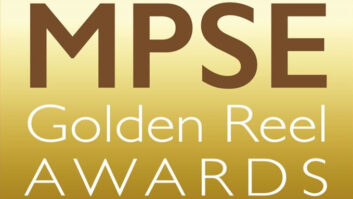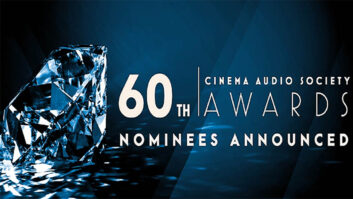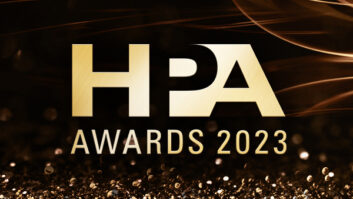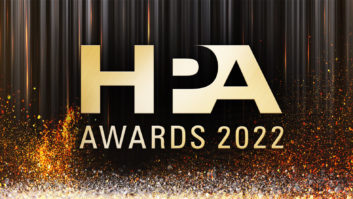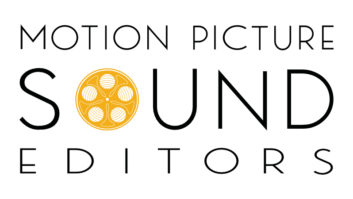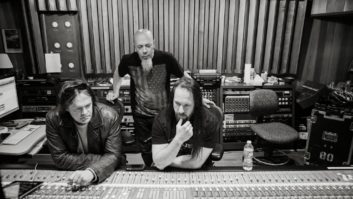Last year it was inescapable: You couldn’t go to a sporting event or a dance party without hearing that unmistakable, a cappella opening booming out of the speakers: “WHO LET THE DOGS OUT? Woof, woof, woof, woof!” And then what followed was a delectable dollop of Caribbean sunshine mixed with a little rap, some hot percussion and some more surreal canine lyrics. In the video for “Who Let the Dogs Out.” the Baha Men, who really are from The Bahamas, were the sleek, smiling party boys on the prowl for some good times — simply irresistible! It was a perfect anthem for summertime, though professional football teams also adopted it in the fall of 2000. The song went on to win the Grammy Award for Best Dance Record, and the album it came from went triple-Platinum in the U.S and has sold millions more around the globe; quite a world music phenomenon.
There’s a lot more to the Baha Men than “Who Let the Dogs Out.” In fact, the album, also called Who Let the Dogs Out (it’s the group’s seventh — so much for being overnight sensations), is rich with great uptempo material that deftly mixes tropical flavors with some killer dance grooves. “You All Dat,” “Get Ya Party On” and “Getting Hotter” all demonstrate their depth and versatility. And their first follow-up since the success of that album, the song “Best Years of Our Lives” from the top-selling Shrek soundtrack, shows that last year’s successes were not flukes.
At least part of the Baha Men’s success is due to the imaginative work of New York-based producer/songwriter Mike Mangini — he co-produced the album’s best tracks and co-wrote two of the songs (though not “Who Let the Dogs Out” — that was a Trinidadian tune). Not surprisingly, this has been the highwater mark for Mangini’s career, but he has a number of other interesting productions under his belt, too, including work for jazz/rap pioneers Digable Planets, O-Town, Bruce Hornsby, Imani Coopola and David Byrne (his latest, Look Into the Eyeball) — all those following a successful stint as an engineer, programmer and session drummer. We caught up with Mangini at the Manhattan offices of S-Curve Records, which released Who Let the Dogs Out, and where Mangini is currently building his own studio.
How did you get into doing engineering and programming originally?
I was a musician originally, and I’m still a musician. But in 1989, I came to New York [he grew up in Baltimore] and got a job at Chung King just as the whole hip hop explosion in New York happened. I was an assistant for about a week. [Laughs.] The guy I was supposed to be an assistant for on Run-DMC just stopped showing up all of a sudden. The great thing about hip hop is they’ll give anybody a shot, so they’re asking me, “Hey, can you run this stuff?” “Sure, no problem.” Of course, I couldn’t really, but somehow I managed, and then we started working, and I started doing engineering and programming for all kinds of hip hop groups.
You must have had some experience.
I had a little home studio, and there would be local bands who would come in and pay to record there, and also I’d try to find artists who were interesting, spec them, and try to make demos and records with those kind of people. I was even doing some hip hop before I came to New York, but I didn’t know the first thing about making it any real sort of way. Then I came to Chung King, and it was like the biggest education in the whole wide world. Within a couple of weeks, I understood how hip hop records were made. But the one thing I always thought was that hip hop records are cool and the vibe is great, but they don’t sound very good.
Well, there were certain “accepted” machines and there was an almost consciously low-tech thing going on…
Sure, that’s part of it — everyone using an SP1200 or 12-bit samplers. What I realized is that nobody making these records had much of an idea of what the hell they were doing. As long as the bottom end was really loud, everybody was happy. So from the beginning for me it was important to try to make better-sounding hip hop records. And, certainly, I wasn’t the only one doing that. There were other people around who were also starting to try to make the records sound better.
Was there a racial component to working in hip hop?
Absolutely. If you look at what the traditional notion of what a producer does — in other words, they’re editing other people’s ideas and shaping records — I was already doing that back in those days [early ’90s], but there was no way I was ever going to get to “produce” hip hop records back then, basically because I was white.
By about 1993, I’d had a lot of success as a programmer and a mixer of all kinds of records — I worked on Jo De Ci; I did a lot of stuff for Puffy [Sean Combs] when he was an A&R guy at Uptown; I did a little work on Mary J. Blige and for Def Jam. I was having a lot of success in that world, but there was no crossing over into a pop thing, so to make a long story short, I decided that I wasn’t going to make those kinds of records anymore. So I sort of sat on the sidelines for a minute to regroup and come up with another plan, when this woman called up and said, “I have this artist and I’d really like you to work with them.” “What kind of music are they?” “Well, they’re rappers, but…” And I said, “You can stop right there. I’m not interested…” But she really stayed on me and called and called, and eventually I met with them and it was this group called Digable Planets. So I made that record in my house, and they let me co-produce.
What did you have in your house?
It was the most rudimentary studio you can imagine. I had a place in New Jersey, right near New York City. I recorded that album [Reachin’ (A New Refutation of Time and Space)] on a Tascam 16-track half-inch and a Tascam console, and an MPC-60 and a S-950. It was pretty raw stuff. But their ideas were really good and the record became very successful — it went Gold, and the single, “Cool Like That,” also won a Grammy for Best Rap Record that year, beating out people like Dr. Dre and Naughty By Nature. So that was pretty exciting. And that was really my favorite era in hip hop — when there were groups like Digable Planets and A Tribe Called Quest and Arrested Development doing those interesting combinations of styles. So I made that record there, and then many years later I ended up doing the Baha Men record in my apartment in New York, doing tracks there, mixing it there and having a huge record. So there’s a certain beauty in working at home, I guess!
So did doing Digable Planets lead to other work?
Yes, and it also allowed me to move into pop a bit, and I started doing some remixing of pop acts, where I’d put beats on. It would be a conventional record with a lot of live instrumentation, and I’d take away the live drums or loop up live drums. It was that whole movement around ’95, ’96, ’97, where people did a lot of that. I did a couple of things for the Beastie Boys around then.
I’ve talked to a lot of engineers through the years who aren’t happy about what remixers have done to music they’ve recorded.
I can see that, but I think you have to look at it for what it is, which is a different medium entirely. When somebody does a remix, it doesn’t take the place of the original mix; it’s just looking at a song from another perspective and, hopefully, redoing it in creative and interesting ways.
I’ve been on both sides of it, too. I made David Byrne’s most recent solo record [Look Into the Eyeball]. I produced the entire album. Subsequently, David has gone out and gotten some remixes done because he’s a very forward-thinking guy — that’s one of the things I love about him — and I think it’s great, because someone can take it and go a whole ‘nother place with it than we did. Now, he brought me the songs and I tried to, in a rhythmic way, stay true to what the song was supposed to be about. But someone can come around and do something completely different that could give the song another life, introducing it to a whole bunch of other people who might not hear the song otherwise. I think it’s only positive. Unfortunately, not everyone doing remixes is great at it, so that’s a down side. But if you get a great remix, it’s amazing. I think it’s a really creative genre.
Didn’t you spend some time in England?
Yes, in the mid-’90s I went to England for about a year, which was a really good experience. I worked a lot at Metropolis, which is this huge warehouse with a zillion studios in it; there’s a lot going on there. And I also worked at Konk Studio, which is The Kinks’ place. I was doing producing, which means I do the track and then get the artist to hopefully deliver a compelling vocal. Or I was reworking other people’s tracks, or in some cases engineering and mixing.
Then I came back to New York, and in ’97 I met this girl named Imani Coppola, who was like 17 years old and didn’t have a deal, and we went into the studio and cut a couple of tracks with her, which led to this huge bidding war over her. That was a different kind of thing musically — it was hip hop, but it had a psychedelic thing going on with it. For me, it was influenced by what the Dust Brothers were doing. She ended up doing a record for Columbia [CBS], and she had a Top 30 single with a song called “Legend of a Cowgirl,” and that seemed to crank my career up a couple of notches; it got a lot of people calling me. Even though the record only did about 150,000 [sold], it was considered kind of a “hip” record, and a lot of people wrote about it.
After that I did a bunch of different records. I worked with Joan Osborne for a bit on the her second record [Righteous Love]…
That must’ve been on the early, pre-Mitchell Froom version…
There were many early versions. There were at least six producers who worked with her and I was one of those people. I co-wrote one song that ended up on the album [“Hurricane”]. During that period, I also produced half of Bruce Hornsby’s record, The Spirit Trail. That was a very interesting experience. Bruce was great. We worked at his studio down in Virginia, which is a very cool place, and we also worked here in New York. He’s an amazing person and an incredible musician.
What do you bring to the table for someone like that, who’s such a forceful songwriter and a commanding presence?
A lot, I hope. I’m a songwriter as well — in fact, I’d say that’s a predominant part of who I am. I think he wanted to make his sound a little bit hipper without losing who he is or selling out. When he was making records when he was his most successful, he was using a LinnDrum. So I think he wanted to get back into some grooves like he had on those records, but hopefully update the sound a bit. I think that record turned out really well.
I also did some work with Dido, but the tracks didn’t make it onto the record.
How did you hook up with David Byrne?
David came to me and said, “I’d like you to produce my record,” which I found very surprising. I mean, growing up, Talking Heads were huge for me; he was almost like a hero of mine. So to have a guy who’s a hero to you call you up and say he wants you to produce his record, it’s a very cool thing. And I said, “Why?” And he said, “There are two records of yours that I’ve heard in the past five years that I think are really great — Imani Coppola and Digable Planets. They were quirky yet commercial, and I want to make a quirky, rhythmic, commercial record.” So we got together and he played me all his demos.
There are some complicated arrangements on that album; all those strings. What were the demos like?
Six or seven songs on the record have some sort of string arrangement. He wrote predominantly on guitar. There were a couple of songs where he had a loop and maybe some sort of string idea. He has a guitar synth and he sometimes would play a suggestion of some texture that could be there, or some suggestion of what the drums might be about. It was hinted what they might be like, but there was also a lot of room for imagination.
What was influencing him in that direction? Is it the influence of the Cuban orchestras and bands who are getting so much exposure now?
I think it goes further back than that. I think it’s more a Gershwin thing. I think David wanted to tax himself and see if he could write real, classic-style songs, but have them still be him. I think he wanted to go as far as he could go melodically this time, both as a singer and a writer. As a lyricist, he’s always amazing, of course, but I think he was pushing himself melodically. The amazing thing about working with David Byrne, I found, is that unlike a lot of first-time artists, he was wide open to being critiqued and to working on things. He might bring in a song and I’d say, “Well, this is really good, but I think maybe what you think is the chorus is more the setup for the chorus and you should work on evolving that idea.” And he would go the next day and work on it and come back and re-present something that would be great. He worked really hard. I’ve seen kids making their first or second record who wouldn’t begin to work that hard or be as conscientious about doing their craft.
Where did you work mostly on that record?
We did the pre-production in my home studio, and then we did the bulk of the live recording at the Cutting Room.
What’s in your studio these days?
I’m in the process of building a real room at the moment. I have the new Sony DMX board and tons of outboard stuff — a Neve Prism rack and a bunch of Avalon gear, which I’m very fond of. I have four 737s, two 2055s. So lots of outboard gear and MIDI gear.
And Pro Tools, I presume?
Actually, no. I use Logic. Honestly, I don’t even know how to open Pro Tools. [Laughs.] Everything I do is 24-bit, 64 tracks in Logic, and I find it really, really flexible.
How has programming changed for you in the past 10 years?
Phenomenally. When I look back at when I started, it was like the Stone Age. When you could program something in, say, an MPC-60 or an SP-1200, and manage to get the damn thing to lock to tape without it slipping and sliding all over the place, the day was a major success. Now you take all this stuff for granted. I remember back in ’97, I was trying to make this very sophisticated record with a group called Swirl 360, which was a really cool record that wasn’t a big commercial success or anything but was really good. I was taking live drummers and then making drum loops and locking it all up. It was like 48 tracks of analog and another 16 tracks running virtual. And it was really, really hard to do that kind of stuff even then.
Now, when everything went 24-bit and you have lots and lots of audio tracks, that’s made a huge difference. It used to be that doing something relatively cool took a lot of work and a little luck for it to go down right. Now, you have more time to be creative and more time to do almost anything your imagination can come up with, because now the tools are right in front of you.
Now, any kid with a little money can buy a system where he can compete. He can make records that can be really interesting and creative and clever. And I think that’s great. It makes it so it’s not who has the most skill as an engineer. It’s who has the best ideas. I mean, the reason I got into doing what I’m doing is that I was the biggest Beatles fan in the world, and I listened to those records and I wanted to be the guy who made records and who experimented with equipment and did interesting things with it.
How did you get involved with the Baha Men?
I was working with David on his record, and then he had to go to Europe to do something for his label [Luaka Bop]. We were going to have a couple of weeks off, and my friend Steve Greenberg picked up the phone and said, “Remember these guys I’ve signed, like four times — the Baha Men?” “Yeah, I know those guys.” And he says, “I’ve got this amazing idea for a song and I want you to do it for me.” I said, “Come over to my house and play it for me.” And he comes over and plays me this Trinidadian version of this song, “Who Let the Dogs Out.” I’m listening to it and looking at him like, “What are you talking about? [Laughs.] What do you want me to do with this?” And he says, “This is really easy. You do a track like ‘Whoops, There it Is,’ [by 95 South] except for the year 2000. Big bass, interesting rhythmic stuff happening.” So I worked on the track at my studio, and then he sent me down to Miami and I recorded the vocals. Believe it or not, it’s cheaper for them to record in Miami than it is in the Bahamas, because the good studios there are so expensive. I took them [the vocals] back and Steve thought they were pretty good but they needed to be better. So we went back and forth a couple of times, and then during that process they ultimately decided their singer wasn’t good enough and they hired some new guys, Rick Carey and Omerit [Hield], who were both really good — they could really deliver the song vocally. We did that at Circle House [in Miami]. Then we came back and recorded a little percussion and some guitar. We sent it over to a mixer, but we felt there was something missing from what he did, so I volunteered to mix it myself. Even though I’ve had people like Tom Lord-Alge and Chris Lord-Alge mix my stuff, for some reason I thought I should do that one — keep it real vibe-y and real raw.
So I mixed it and Steve thought it was pretty damn close. He came over, we tweaked it for about an hour and that was it. It got mastered and then he started taking it around to people and got just the most amazing response.
After that, Steve called me up and he said, “Listen, you and I are close friends. Let me make a recommendation to you. I’m telling you — this is going to be a huge hit. You’re going to be really bummed if you only have one song on this record. So if you can find another couple of weeks to go down there and work on some songs with them, I think it’d be great for you and them.” So I did get another break from David [Byrne] and I ran down there [to Miami] for four or five days. I had some tracks that I brought with me. We wrote to them on the spot, came back and worked on that.
Was the song on the Shrek soundtrack done at the same time, or after?
No, that’s more recent. It’s really great to be part of that movie.
What have you learned about the group, now that you’ve worked with them for a while?
Actually, these days I’m working on songs for the next Baha Men record, so it’s an ongoing thing. We have a nice way that we work together. I start a track, we bring it down, they contribute however they can — play on it, write on it — and that seems to work very well. The band at this point have a sense of what they’ve become and they’re psyched about it. At the same time, they’re concerned about keeping a certain amount of real instrumentation in the records and they don’t want to become too much of a pop thing — they want to keep the world music elements in there, and I do, too. That’s a lot of what makes them special. I will tell you, no joke, these people are up there with anybody I’ve worked with. They are amazing musicians.
What else have you done recently?
I did a track on the O-Town record. I’m in the process of making a record for S-Curve with these four sisters from Florida who are really cool — the youngest is 13 and the oldest is 23 [The Beu Sister]. It’s pop, but it’s different than what’s going on out there. The tracks have a sort of European influence; kind of like a Fatboy Slim or William Orbit direction. And they have an almost country sound in their vocals. I like the idea of making a lot of different kinds of records and not get caught up making the same one over and over again.
I also did this record for David’s label, a group called Si-Se — amazing, man! I saw them last night at the record release party and I’d never seen them play live before. I was blown away. The girl [Carol C.] is like a Latin Sade. It’s got a world music thing but also a trip hop thing. It’s the kind of record that could come out of nowhere and really be a big thing if people get to hear it. I produced half the record. It’s very cool and cutting edge.
And you’re setting up a studio?
Steve and the guys at S-Curve have been nice enough to give me some space in their building, so I’m in the process of building a room there. Gear-wise, I’m going to pretty much go with what I’ve already got, because I’m really comfortable with it.
I really love making records in unorthodox situations. For me, it always seems to work out better than if, say, I go to some really big commercial studio every day. When you book a room for $2,500 a day, you tend to sit behind the console and jam all day long, because you’ve got to get it done in a certain period of time. The flip side is that when I work in my own room, I can work for a bit, take a break, clean my ears out, keep things fresh. So this will be ideal for me. I’m really looking forward to this.
Blair Jackson is senior editor of Mix.
